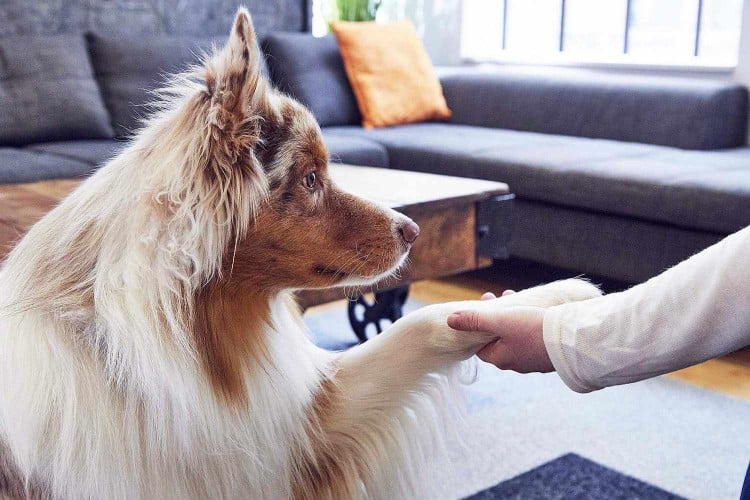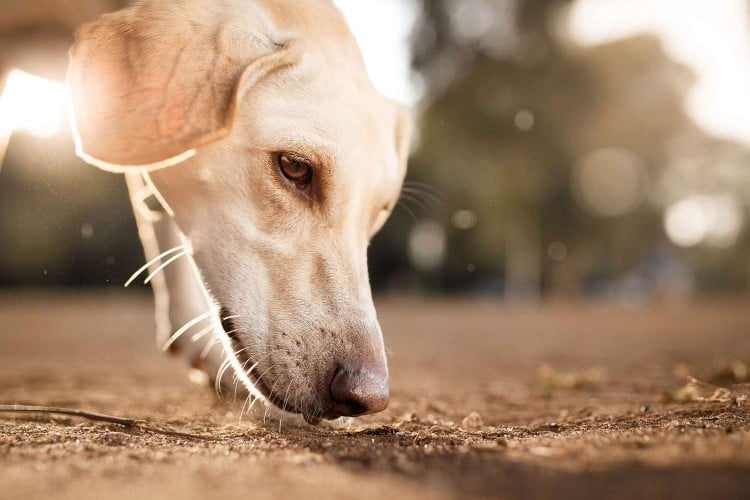This past year, many people have been working from home with their pets right by their side (or on their keyboard, or under their office chair) and these pets aren't used to being home alone the way they were in the past—new puppies may have never been home alone all day before!
In 2020 and 2021 pets have been adopted at an amazing rate, clearing shelters across the country. In fact, according to the American Pet Products Association (APPA) COVID-19 Pulse Study, more than 12 million households said they had gotten a new pet by the end of 2020.
As COVID-19 vaccinations ramp up in the U.S. and pet parents start to think about return-to-work plans, is your dog ready for the transition back to "normal" life? Or maybe the better question is are YOU ready to be separated from your dog?
If the answer is, "I can't imagine ever being away from my fur baby all day again," the team at Daily Paws has put together a free 14-day plan designed by a certified professional dog trainer and backed by animal behavior experts to help you get your pup back on track post-pandemic.
Download a printable PDF of this chart here to hang on your fridge and keep track of your progress!
Day 1: Recognize the signs of stress and anxiety in your dog.
It's important to recognize signs that your dog is feeling anxious or stressed. Paying close attention to your dog's behavior and body language when you leave is a good indicator about how they will feel while you are gone.
Day 2: Create a safe space for your dog.
To keep your canine friend safe and happy while you are away, create a special safe space in your home they can hang out in. Your bedroom or kitchen are great options that can be easily modified with baby gates and dog-friendly furniture.
Use a baby gate to separate your dog's space from the rest of the home. In a quiet corner, place your dog's kennel or crate, favorite mat or dog bed and blanket, and a water bowl they can easily access. A white noise machine can help keep your canine feeling calm, too.
Puppy tip: Kitchens make great places for puppies, depending on the floor material. Try placing a puppy pee pad in one section of the space and an open kennel or crate in another.
Day 3: Provide enrichment toys to prevent boredom.
Day 4: Dog-proof your home.
No matter the age of your dog, your home needs to be a safe space for them. Spend time going through each room and dog-proofing the space.
Specifically, pick up everything from floors, close doors to all closets and cabinets, and consider adding baby-safe locks to cabinet doors. Use baby gates to block off areas full of things your dog might chew. (A kid's room in particular is full of tiny things that can become dangerous for curious dogs!)
- Kitchen
- Living Room
- Bathrooms
- Bedrooms
- Laundry Room
- Yard
Day 5: Hire help if you need it.
Day 6: Teach your dog new cues.
Teaching your dog some essential skills and cues is a great way to engage their brain before you leave each day, leaving them to feel a bit more at ease and even a little tired.
Here are some can-do cues you and your dog will have fun learning together:
Day 7: Create a consistent schedule.
Week 1 Complete!
You're halfway there! Check off all the progress you've made, and celebrate with an impromptu living room dance paw-ty.
- Recognize the signs of stress and anxiety.
- Create a safe space.
- Provide enrichment toys to prevent boredom.
- Dog-proof your home.
- Hire help if you need it.
- Teach your dog new cues.
- Create a consistent routine.
Ready for week two? In the second week of this program, you'll be focusing on practicing leaving your pet for increasing periods of time to get them accustomed to being home alone.
Day 8: Make crate time enjoyable.
Day 9: Practice crate stays while at home.
Day 10: Go outside (alone).
The first day you practice leaving your dog at home alone is very short—just go outside and grab the mail or walk around your yard for a few minutes and then immediately return.
This is a great day to start journaling, too. It's helpful to keep a notebook of your dog's body language signals right before and right after you leave your home.
- What do your dog's ears look like?
- What is their tail doing?
- Are they panting or drooling?
Keeping a journal and paying attention to changes in your dog's body language goes a long way in helping you determine how your dog is handling the separation from you day-to-day.
Day 11: Walk around the block (alone).
Day 12: Get your dog used to the sights and sounds of leaving.
Day 13: Go for a drive (alone).
Day 14: Increase your time away.
Week 2 Complete!
Check off everything you've accomplished.
- Make crate time enjoyable.
- Practice crate stays while at home.
- Go outside (alone).
- Walk around the block (alone).
- Get your dog used to the sights and sounds of leaving.
- Go for a drive (alone).
- Increase your time away working up to four hours at a time.
You did it! But you're not quite done just yet. Your relationship with your pet becomes stronger the more you nurture it, and getting your dog completely comfortable with being alone takes time.
Now take the tips you've learned and practice continuous enrichment to strengthen your bond with your dog—and make sure she's living a happy and healthy life every day.





